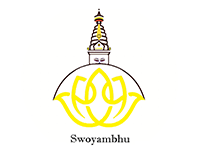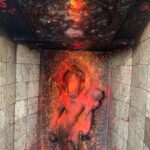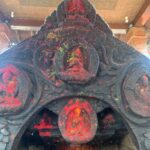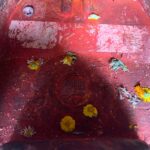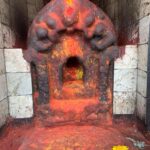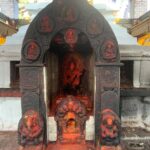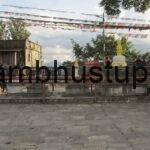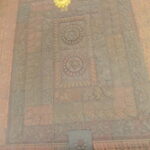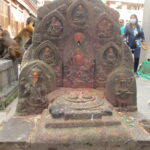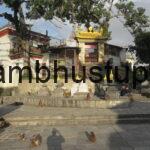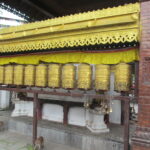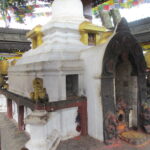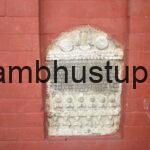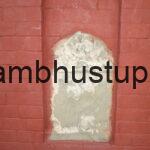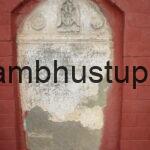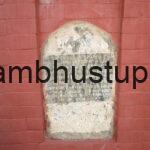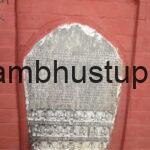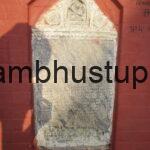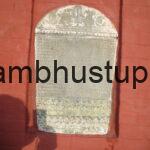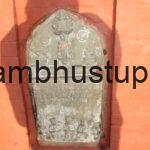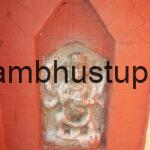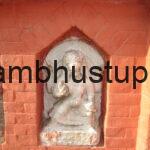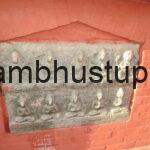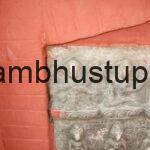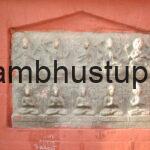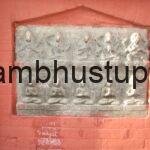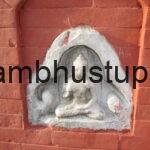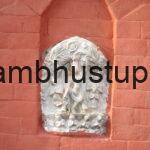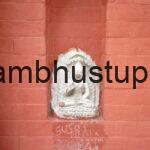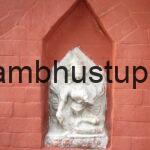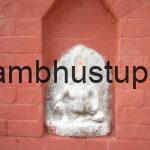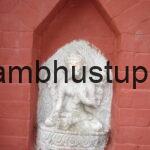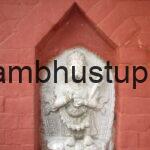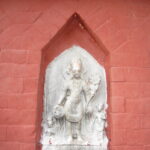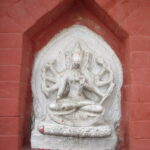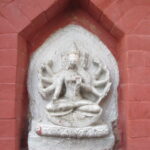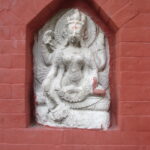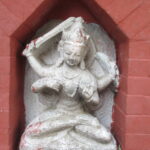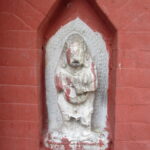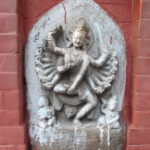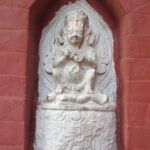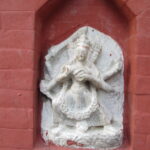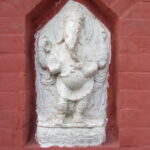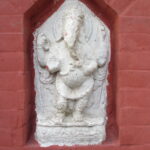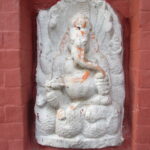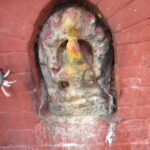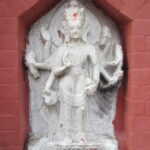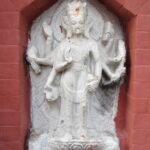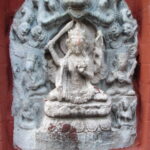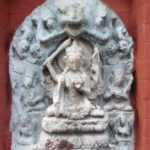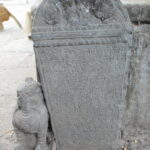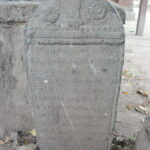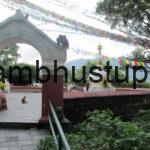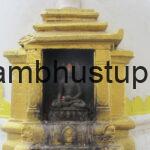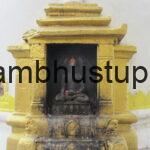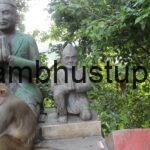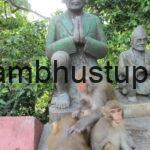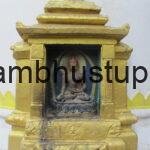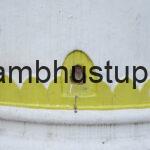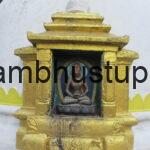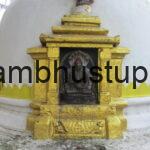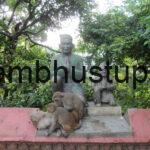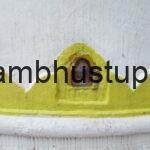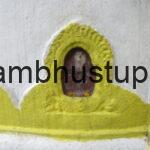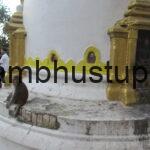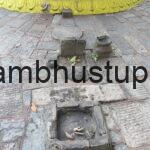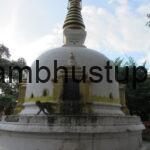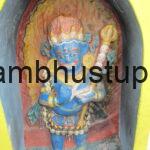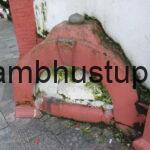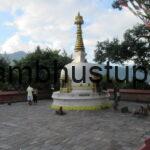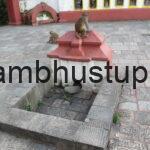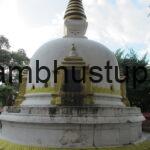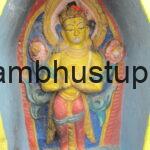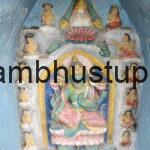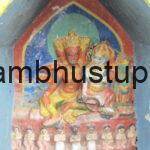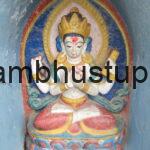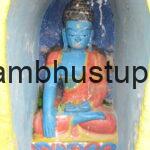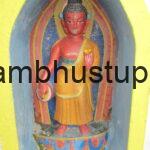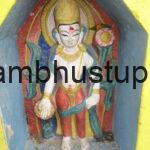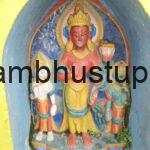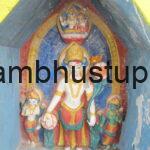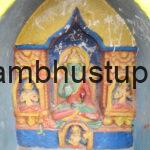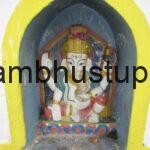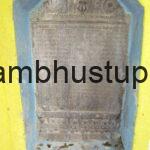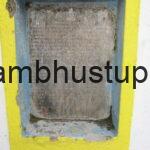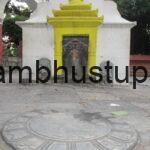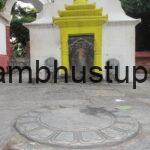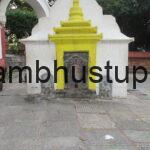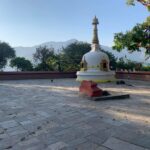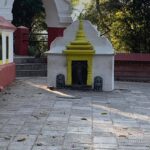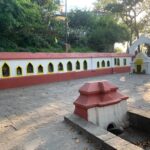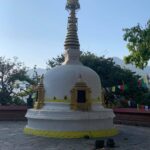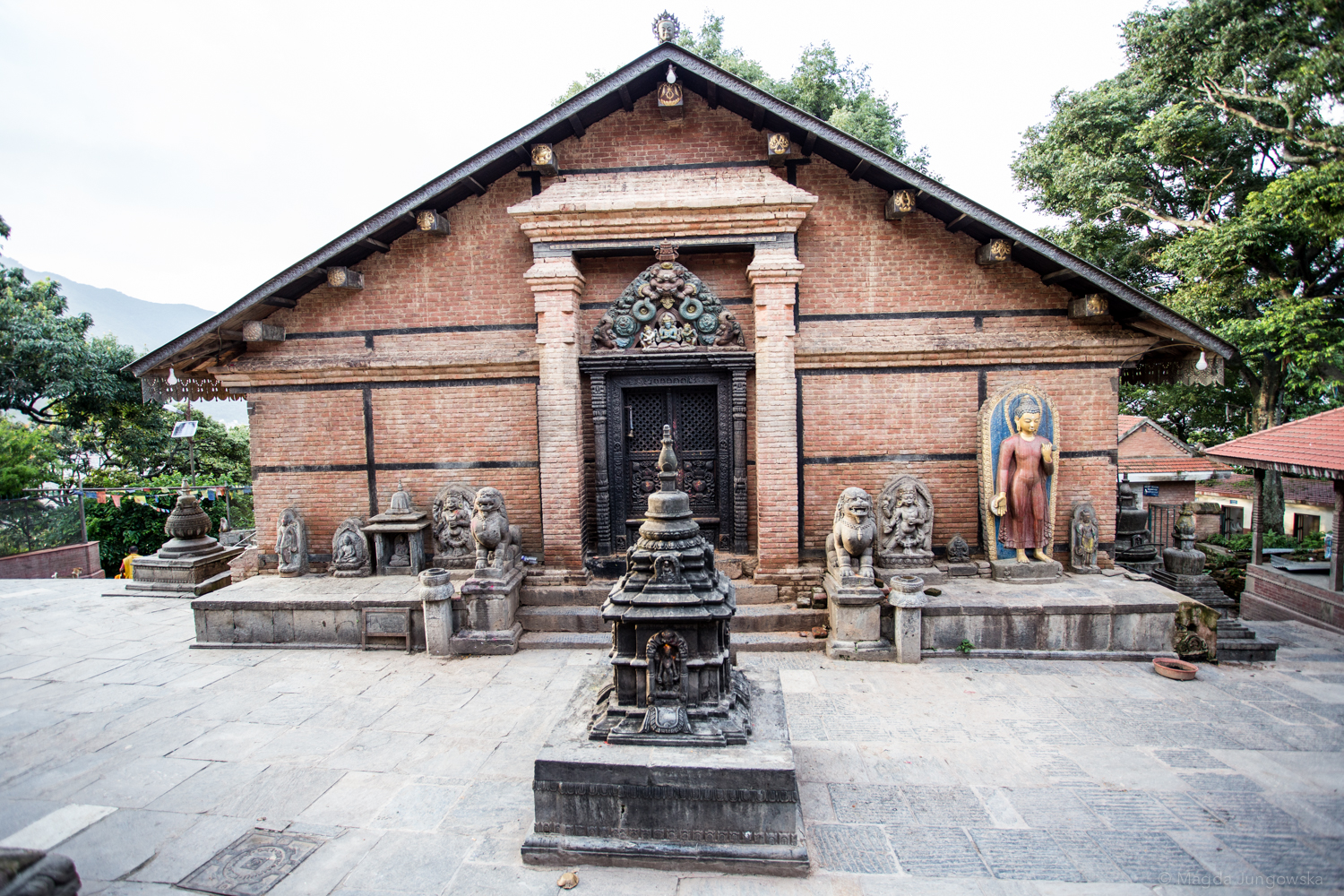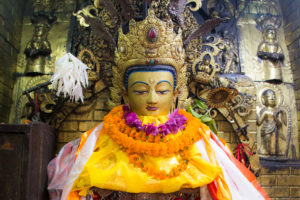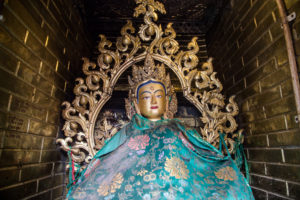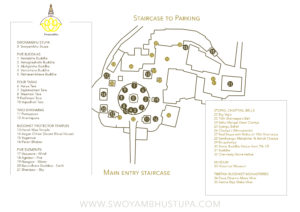Manjushree Dharmadhatu Baagishwora
Welcome to the God of Knowledge and Wishdom
Manjushree Dharmadhatu Baagishwora
Swoyambhu is a twin peaked hillock, Gopuccha (look like the tail of cow) and Goshingay (look like the horn of cow). Just below the monastery on the western peak (Goshingay hill) there is the small chaitya with ‘Mani Wheels’ (Prayer Wheels) surrounding known as Manjushree Dharmadhatu Vagishwor Chaitya. A mandala of Manjushree Vagishwor is also known as “Manjushree Paduka” ( a footprint of Guru Manjushree ) which was installed in front of the chaitya.
To the east of the chaitya lies a stone gate surmounted by torana, with side by side the stone gate there are four mythological animals and to the west, a new rest house has been built in front of the chaitya, in north side walls that are decorated with images of Buddhist deities and images of Ganesh also.
This chaitya was been built by Sri Shantikacharya, who believe to have erected the Swoyambhu Mahachaiya. This chaitya is dedicated to Manjushree the god of wisdom. Manjushree was credited as the founder of Kathmandu valley by cutting open the southern side of hill by his wisdom sword and drained the water from lake, established the first city known as ‘Manju-Pattan’ now called Kathmandu Valley.
In the auspicious day of Shree Panchami festival the devotees, thousands of students and teachers come here to pay homage to Great Guru Manjushree hoping to be accomplished in learnings and skills. This chaitya also looks after by the Buddhacharya priest family of Swoyambhu.
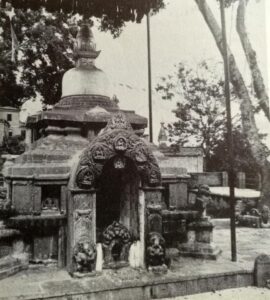
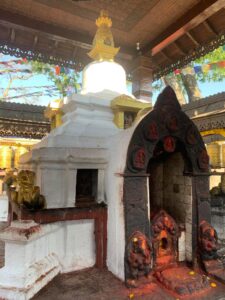
Images from Manjushree Temple
Pulaun Syangu ( Old Swoyambhu )
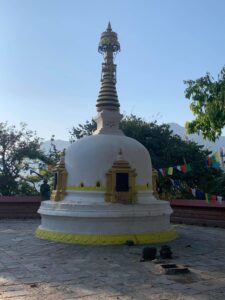
This chaitya lies to the north of Manjushree Hill and is surrounded by walls containing niches with statues on south. It has two entrances, located in the east and west. Pulaun Syangu simply means “old Swoyambhu”. Some assert that this chaitya is even older then the Swoyambhu Mahachaitya itself because of name but it’s completely mistaken to think that. This site was used by Guru Manjushree to initiate his disciple Bhiksu Gunakara.
It is believed that even the divine Visvakarma and the gods of the ten direction had actively participated in the construction of the chaitya. This chaitya was also built by Guru Shantikaracharya by consecrated it with the proper rituals and ceremonies. He also invoked Hevarja, Bhairava and serpent kings and consecrated images in the surrounding area. Even Guru Shantikara, also got teachings from Bhiksu Gunakara at this place, because of it, in this place Swoyambhu priest Buddhacharya also get Acharya initiation.
The chaitya has four Tathgatas represented by stone sculptures, whereas the fifth Tathgatas and four Tara’s are represented only symbolically by a small empty niches with eye’s. The Buddhacharya priest of Swoyambhu worship mainly Aksobhya, as a clan buddha in this chaitya. In the eastern side of chaitya, we find a lotus stone with the feet of Manjushree, a stone lamp (dipa) and a small pit (Jagesala) for the sacred fires which are performed on the occasion of Digudyahpuja ( Dev Puja ).
With the enclosed space there is also a non- iconic represention of Yogambara, that esoteric form of the Adibuddha, represent the Clan deity (Digudyah) of the Buddhacharya, the caretakers of Swoyambhu. The shrine has the shape of small temple in relief, with finial in the shape of a chaitya, set into a retaining wall. Guarded by statues of simgini and byanghini. All the members of their clan come together here on the occasion of Chaitra Dashai to celebrate the Digudyahpuja and a few days before Asvin Dasai to celebrate the yearly change of guthi caretakership from one lineage to the other. In this place Buddhacharya family also welcome their newly married women and newly born son to their clan or family.
This chaitya has been renovated many time, we can also find it in the stone inscription in this place describing it of 1014 N.S. renovate by Mr. jogpala Vajracarya from Thahity, Kwaabahal sponsored by Mr. Parsumuni Silakar from Kusudeolachi, Thahity. In the year 1948 A.D. also the whole chaitya was renovated by Hira Bahadur Citrakar who had built a wall and 12 statues, he places it, into niches of the Southern wall and he added a figure of Ganesa which was made on his expense. His status is place in west side of the chaitya with his son. In 2015 earthquake this chaitya was also damage and it renovated was dones by (FSMC) Federation of Swoyamhu Management and Conservation with the help by devotees.
